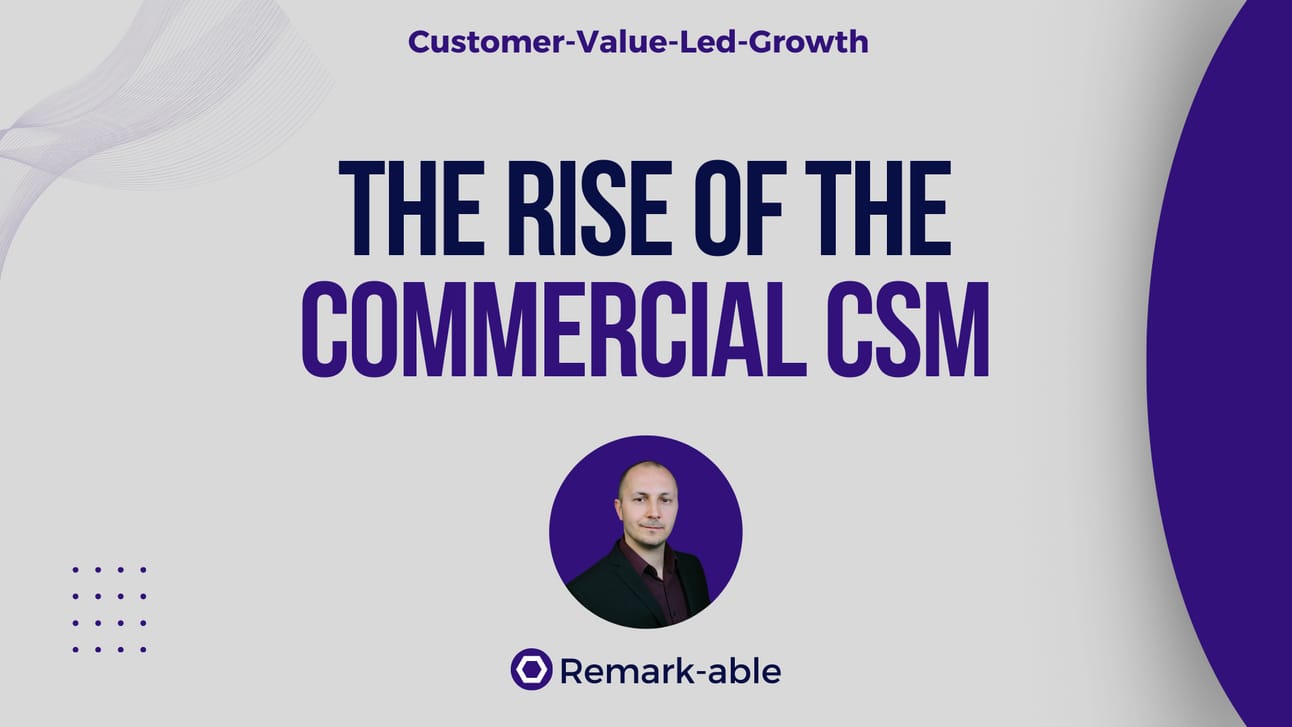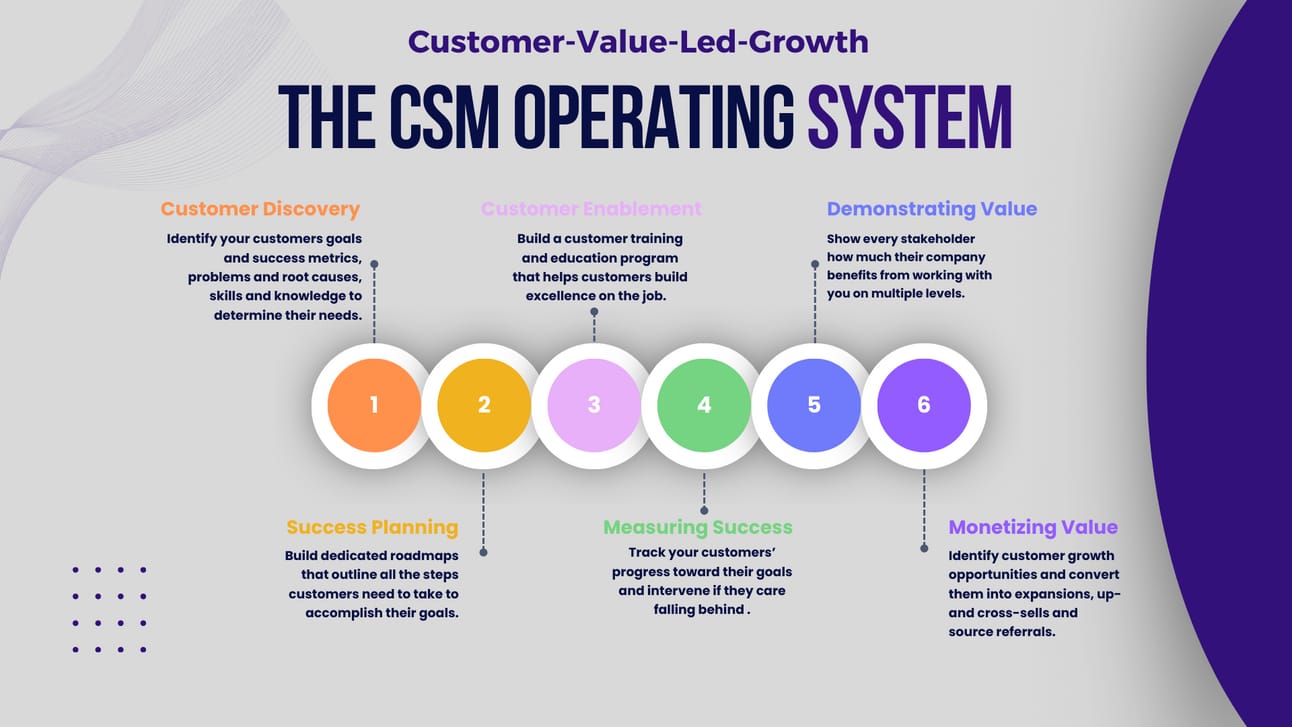
Hi, Markus here. Welcome to a new episode of the Customer-Value-Led-Growth Newsletter.
I share strategies and guides to help you become a proactive CSM delivering more value for your customers and revenue for your company every week.
Need additional help? Check out these resources 👇
Does your leadership believe in CSM? Do they hand out more budgets like candy? Are they publicly raving about how what great work you are doing?
You are not alone. For the past decade (or longer) CSM has been underappreciated, underrated, and underfunded.
The discussion about whether you need CSM at all is ongoing. “What’s the ROI of CSM?” is still a question roaming in C-suite and board cycles.
This is why I believe receiving revenue goals is the best thing that could happen for CSM teams.
It allows them to demonstrate the value they bring to the company beyond the shadow of a doubt.
🔇 To silence all doubters once and for all.
👏 To finally get the recognition and status they deserve.
💎 To get paid accordingly.
In today’s post, I want to explore how to seize this golden opportunity.
Busting the Myth
A lot of CSM teams don’t share my enthusiasm and it’s not a surprise. Over the past decade (at least) they have been made to believe that selling is evil.
They have been made to believe that it destroys their customer relationships. It’s true - if you do it the wrong way, that’s what will happen.
But as you’ve guessed already, if there’s a wrong way there must also be a right way. Let’s take a look at the wrong way first. The wrong way is selling for selfish reasons.
Some examples:
👎 selling to a customer who is struggling to get value from your product - nothing screams louder that you care about your interests over your customers’
👎 pushing additional features shortly after customers have signed up for the product and are in the process of figuring things out
👎 talking customers into buying features that do not fit their use case and they will never use
If you are doing one (or all) of these things you deserve customers to lose their trust and “break up” with you.
Selling the right Way
I’m a big believer in well-rounded education. So I follow the content of top marketers, salespeople, and product managers to build a basic understanding of these areas.
If you examine how the most successful sellers think and work, you’ll notice that it is not what you are (likely) used to.
They do not consider “everybody” as their ICP. They do not spam leads with irrelevant outreach. They do not persuade or manipulate prospects into buying.
They help them solve their problems. If there’s not a match, they walk away instead of closing customers at all costs. They are selling the right way and you can do it too.
Instead of asking what you want your customers to buy next, you need to ask yourself how you could help them to further grow their value.
Follow these steps 👇
Identify customer growth opportunities (e.g. additional use cases or higher tier goals they can accomplish)
Build business cases and demonstrate how they can seize those opportunities
Connect them with the additional resources, features or products they require
👉 If your customers are not getting substantial value from their initial investment in your product, they are not a CSQL. You need to focus all your efforts on rectifying the situation.
The CSM Operating System
Now, it’s time to talk about the harder part - delivering substantial value to whet your customers’ appetites for more. As you know, customer expectations are sky-high, and they’re not going to change anytime soon.
If you want to maximize your revenue impact and seize the rewards, it’s not enough to wow your customers occasionally. You need to find a way to do it predictably and repeatedly.
In 2024, I built a CSM Operating System for this very purpose. A framework to build an end-to-end process from customer discovery to account expansion. Here’s how it works in a nutshell 👇

1. Identifying customer needs
the goals customers want to accomplish and how the measure success
the problems they need to accomplish those goals
their current skills and knowledge (to identify the gaps)
2. Success planning
translating customer needs into a roadmap to success
breaking it down into actionable pieces
segmenting customers by their needs
3. Customer enablement
building an outcome-focused education and training program
delivering quick wins during the customer onboarding
measuring what worked, what did not, and why through quality feedback
4. Tracking progress
measuring results with the defined customers’ success
following up to prevent customers from getting stuck
addressing issues and resulting risks in real-time
5. Demonstrating value
benchmark projected vs actual results
turn QBRs into customer value reviews
highlight how your customers’ lives improved in the process
6. Monetizing value
identify growth opportunities
build business cases and present them to customers
connect it with additional resources, features, and products
If you are following this recipe, you don’t have to choose between customer relationships and your business goals.
Because everybody wins - your customers, your company, and you.
Here’s how I can be of further help 👇
Learning Platform: Become 1% better at delivering, growing, and monetizing customer value every day.
Coaching: Upskill faster and further with weekly coaching calls in a group-, leadership- or team setup.
Courses and Guides: Get the strategies, tools, and processes to move from reactive CSM to Customer Value-Led Growth.
Sponsorships: Promote your product, service, content, or event to 7.9k+ CS professionals in my newsletter or 48.4k+ on LinkedIn.
